Foxes, butterflies, snakes: Montrealers hope COP15 attention will help urban wildlife, too
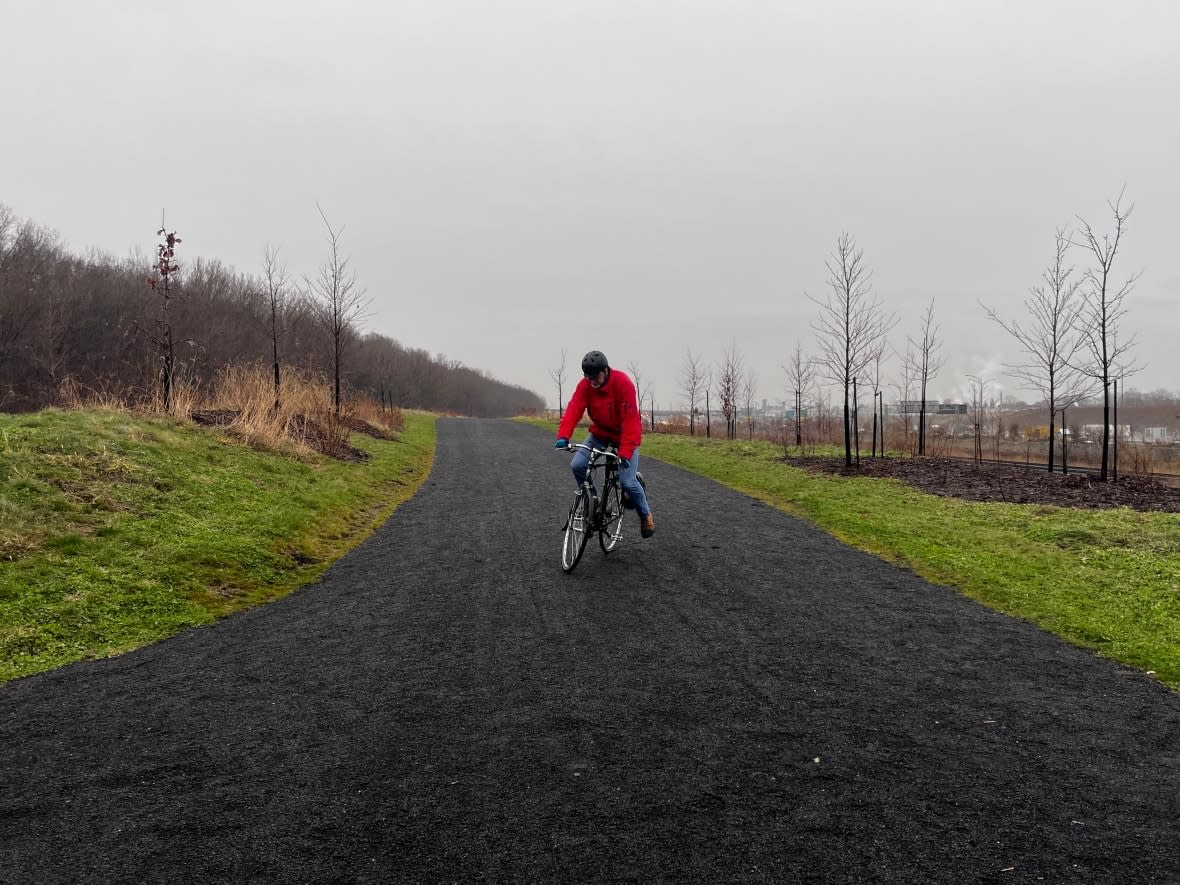
Despite a constant, cold drizzle on a Montreal afternoon, Chris Breier thought it was as good a time as ever to do his volunteer work at Falaise St-Jacques, an escarpment west of downtown.
Five days a week for most of the past year since he retired, Breier has tended the slope of forest sandwiched between St-Jacques Street in Montreal's Notre-Dame-de-Grâce neighbourhood, Highway 20 and a railroad.
He helps maintain the paths that zigzag through the woods, installing logs to outline those paths and cutting vines to prevent them from strangling trees.
Each time, he'll spend about "three to five hours — I should really do three, but I can't stop," said Breier, who was a sound, light and camera guy during his decades-long career in television.
"This is the most incredible thing that I could have discovered when I retired," he said. "The health benefits of this forest are incredibly important to the community."
Before volunteers began tending to it in recent years, the forest had become a dumping ground for everything from household garbage and tires to dirty snow that had accumulated in parking lots.
Volunteers like Breier are vital to Montreal's urban biodiversity, according to local ecologists who hope the attention from the city hosting COP15 this month will lead to the expansion of more green spaces on its territory, and more citizen involvement in maintaining them.
They want officials around the world to understand the importance of supporting wildlife — not just outside of cities, but within them as well.
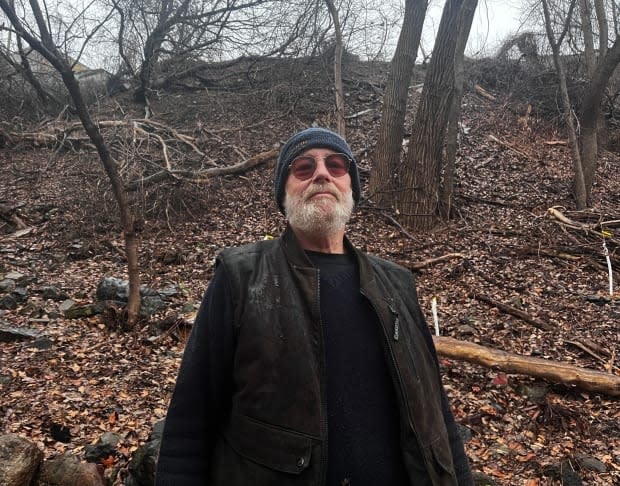
"It's essential that urban citizens feel connected to nature," said Roger Jochym, a co-ordinator for Sauvons la falaise, a group that has been fighting to protect and promote the natural beauty of the escarpment, which is a habitat for birds, foxes, butterflies and one of the most significant populations of brown snakes in the province.
"Young people … should be able to walk out of their classroom, walk a couple of blocks and be within nature, within a natural setting, and understand what they're learning in the classroom."
In a statement about what to expect at this year's COP15, the United Nations Environment Program (UNEP), listed fragmentation of natural areas as one of the key issues the conference plans to address.
"Fragmentation and land-use changes — driven by agriculture and urban sprawl — are driving 80 per cent of biodiversity loss in many areas," it said.
Connecting natural areas, levels of government
In its 2023 budget, released last month, the city of Montreal announced plans to spend $180.9 million on natural infrastructure, including parks and green areas to help absorb rainwater and curb heat retention.
The city says it also plans to increase the connections between natural areas with a network of "green corridors." Corridors linking green spaces can help wildlife get from one area to the next, improving the biodiversity in each. Ecologists have observed a decrease in species over the years on Mount Royal, with few options of other green spaces for animals to travel to.
Last month, ahead of COP15, Montreal announced it was adopting a multi-year plan to protect pollinators, such as bees and butterflies, through a number of actions, including increasing the land area of protected natural environments by 10 per cent by 2030, and revising bylaws on cleanliness to reduce mowing and allow plant patches to grow.
According to Park People, a national charity that collects data on urban parks across Canada, Montreal has a total of 6,446 hectares of parks and green space. In comparison, Toronto has 8,086 hectares and the city of Vancouver, 1,164.
Mount Royal Park represents 200 hectares and the escarpment is about 33.
Catherine Houbart, the director general of advocacy organization Groupe de recommandations et d'actions pour un meilleur environnement (GRAME), says that while the city, under Mayor Valérie Plante, has made strides in protecting and promoting biodiversity, there remain barriers between different levels of government.
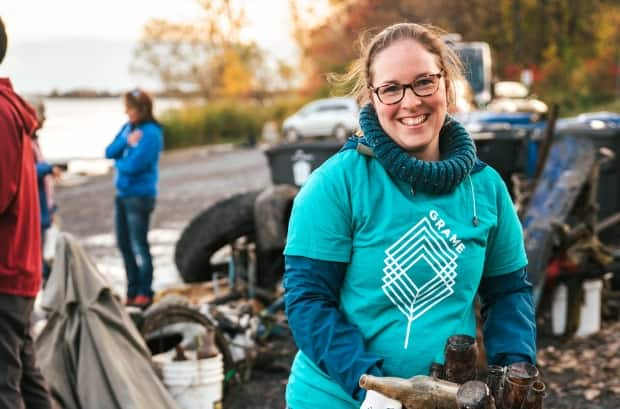
Her office is near the Lachine Canal, a 14-km long National Historic Site managed by Parks Canada that attracts hordes of people in the warmer months. The canal's shores are covered in grass, but not much else.
On a section of it in the neighbourhood of Pointe-Saint-Charles, Houbart points out the stumps of trees that were cut and not replaced. Despite attracting all those people in the summer, there's barely any shade to escape the sun and heat.
"We need that shade, we need that canopy and we need to use large spaces like the Lachine Canal to add canopy in our city," Houbart said.
And though Houbart sees the canal as a perfect place to contribute to the city's goal of increasing its tree canopy from 20 to 26 per cent by 2025, the land is owned by Parks Canada.
She says varying public land ownership between levels of government can sometimes present bureaucratic barriers to progress.
Jochym and his group have encountered such a barrier with the ecarpment. Quebec's Transport Ministry owns the portion of land at the bottom of the escarpment and created a park and bike path roughly 1.5-km long.
But in 2018 the ministry removed from its plans the creation of a "green" footbridge crossing the railroad and highway that would have connected the Sud-Ouest, Lachine and Côte-des-Neiges–Notre-Dame-de-Grâce boroughs for people — and animals.
"There should be a network of continuity for biodiversity through ecological corridors," Jochym said, noting the bridge could act as a wildlife corridor. "It would increase the variety of flora and fauna that one observes in those areas."
The ministry has said it would consider building the bridge. The group is pushing for it to release a plan and funding.
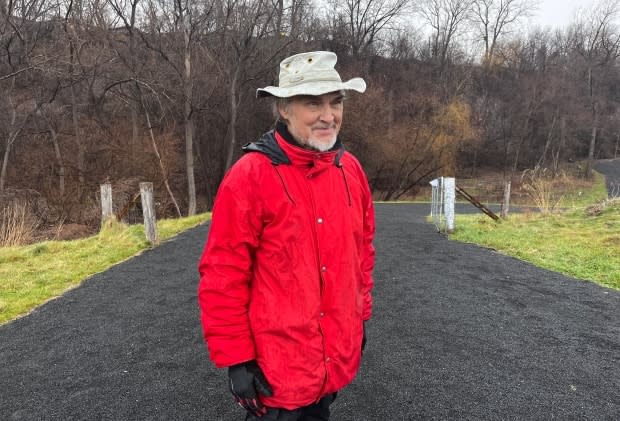
Malcolm McRae, another member of Sauvons la falaise, is responsible for the 10 bird feeders installed along the paths in the escarpment forest.
McRae bikes most everywhere and revived the Montreal Bicycle Club five years ago. During the pandemic, he began to photograph the birds at the escarpment.
"It changed my life. It's really changed me. Just the interest in birds and everything. It's become something I'm aware of," McRae said. He believes the area has the potential to be a bird sanctuary, teeming with chickadees and nuthatches.
A pileated woodpecker clung to a nearby tree as he approached one of the bird feeders.
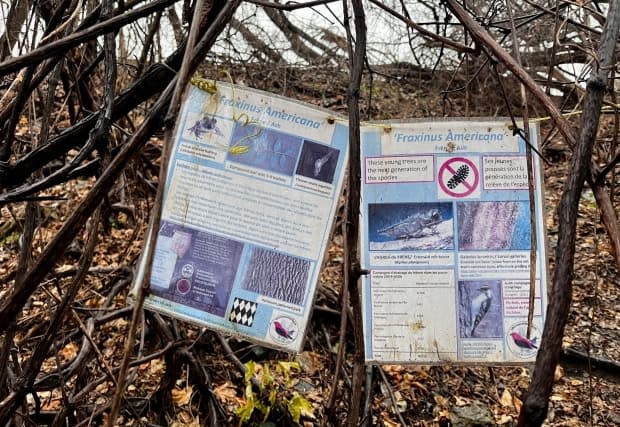
'Protect what's left'
There is little left in Montreal to conserve, said Julien Poisson, a program director at the Nature Conservancy of Canada (NCC), a land conservation organization that helps manage and restore public and private lands.
So the NCC has focused on areas on either end of the island to allow wildlife connections between the land north and south of it.
"In Montreal, my message is to protect what's left," he said, echoing Houbart in noting that much of the green space in the city is fragmented and uneven depending on neighbourhood.
A satellite map on his computer reveals, for example, the stark contrast of green versus grey between the affluent Town of Mount Royal and adjacent densely populated Parc-Extension neighbourhood.
"Biodiversity is everything that's alive," Poisson said. "I tell people that you have to open your eyes. It might be small in the city, but it's all around."
Raccoons, chickadees, dandelions, squirrels — they all matter, he said.
The targets the nearly 200 nations at COP15 will agree on later this month may seem distant to everyday people, but Poisson said he wants people to know everyone can do something.
"You can even start by not killing the spiders you see in your home," he said with a laugh.


